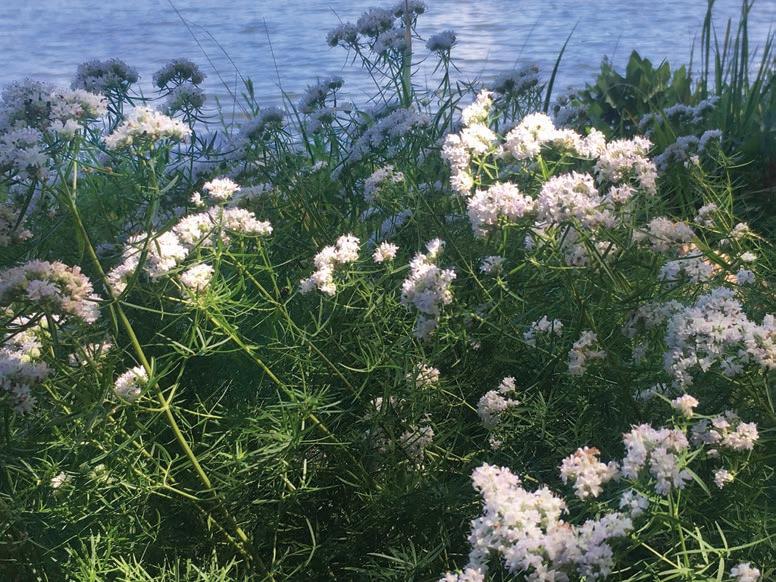
19 minute read
Wet and Wild

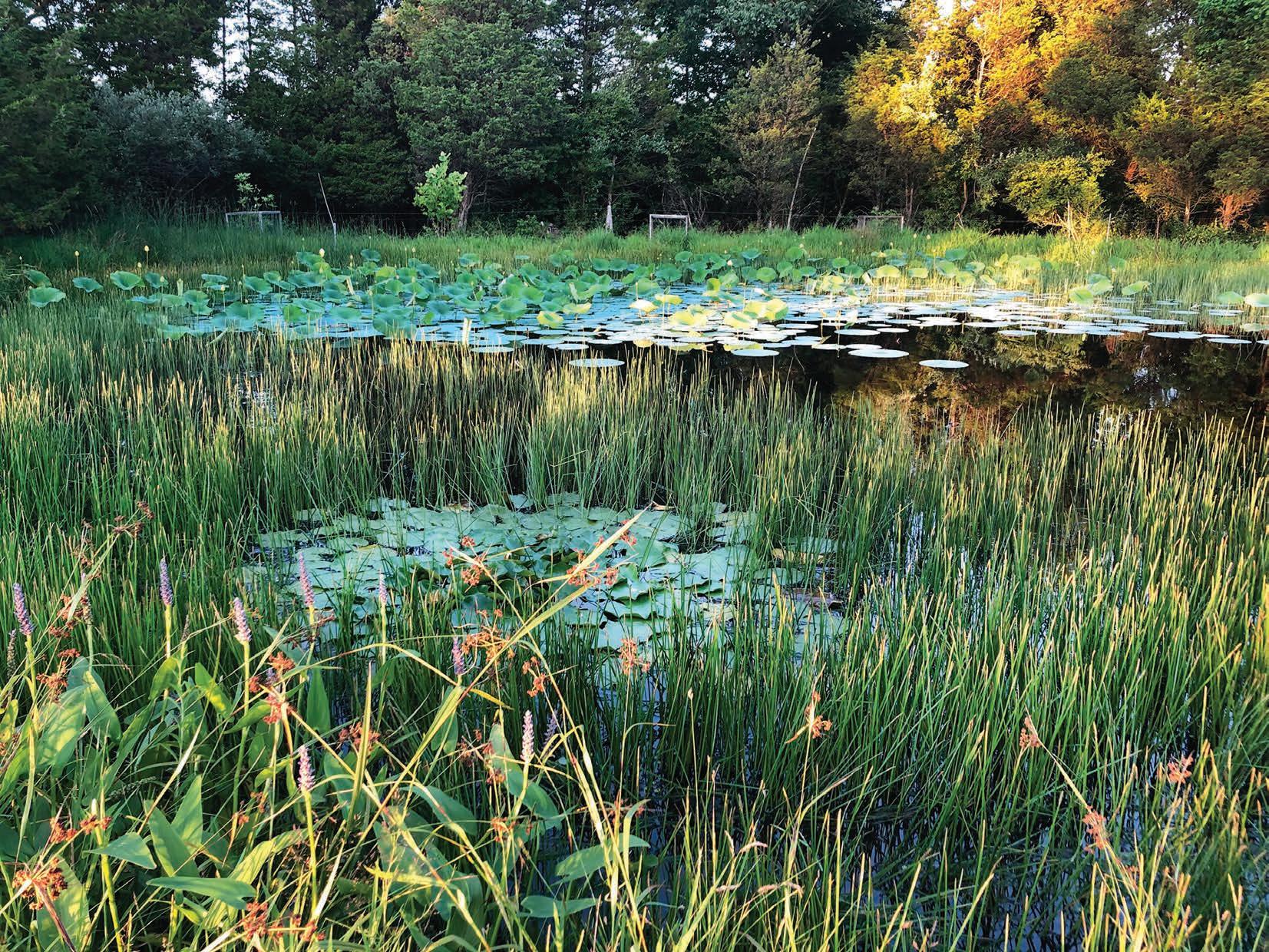
Advertisement
By not mowing to the pond's edge (top), we were able to increase plant diversity. JoePye weed (bottom left) is an all-star in the late-summer meadow. Mountain mints (bottom right) are deer resistant and attract more than 63 beneficial insects. Asters (opposite page) are an important nectar source for migrating monarchs.
Native plantings revitalize wet meadow ecosystems
by John Mark Courtney,
Kind Earth Growers LLC
Water in the landscape creates many opportunities for habitat creation and enhancement. After all, the enjoyment that open-water habitats, backyard ponds and water features provide for amphibians, fish, birds and humans alike is well known and at the core of mainstream gardening.
A large and often overlooked opportunity can be found in gardening the wet, seasonally “unmowable” areas of the landscape, including wetlands and fallow farmland. Over the last decade, pollinators and green stormwater management have been building a growing interest in going native among homeowners, businesses and corporate campuses. Wet areas can tap into the power of native plant diversity and create a functioning wet meadow or wetland habitat by properly planting and seeding according to the season. At best, they can transform an overlooked landscape into a restored habitat with renewed ecological function.
The Henrys live on five acres in southeastern Pennsylvania (growing Zone 6a) that was historically farmed and grazed until the late 1960s. The soil on the property consists of fine silt loam with the water table 6 to 18 inches below the surface and a fragipan layer at 18 to 22 inches. None of the soils is classified as hydric; however, there is a perched water table that leads to seasonal ponding and the presence of obligate vegetation.
Since the legacy seed bank was still somewhat intact, a wet meadow matrix of sedges, rushes and other wet-loving forbs have emerged, along with other undesirable non-native annual, perennial and woody plant species. The Henrys are native plant enthusiasts, so they were pleased to know that there was already a preexisting population of wet meadow species. However, the meadow had deteriorated. The family wished to improve the wet meadow diversity but wasn’t sure where to start.
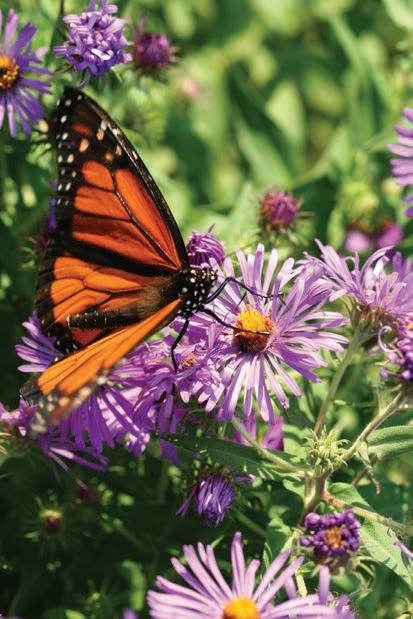
Wet Meadow or Wetland?
Wetlands are defined by the U.S. EPA as areas where water covers the soil or is present either at or near the surface of the soil all year, or for varying periods of time during the year, including during the growing season. Water saturation, or hydrology, largely determines how the soil develops and the types of plant and animal communities living in and on the soil. Wetlands may support both aquatic and terrestrial species. The prolonged presence of water creates conditions that favor the growth of specially adapted plants (hydrophytes or obligate vegetation) and promote the development of characteristic wetland (hydric) soils.
A wet meadow is predominantly an open habitat with seasonally saturated soil dominated by herbaceous plants, typically hydrophytes. If there is hydric soil present, it is a wetland. If not, it is just a wet meadow. Regardless of official designation, both habitats provide essential ecosystem services for pollinators, wildlife and water quality. The Henrys had a wet meadow in need of enhancement.
BOULDERS • VENEER • GRAVEL • FIREPIT ROCK100% Natural Rock!
Lightweight pumice rock from California • Easily carved & manipulated Perfect for ponds, waterfalls, and any other water feature projects.



Above project by Matthew Giampietro of Waterfalls Fountains & Gardens Inc. featherock.com • sales@featherock.com 800-423-3037 • 818-882-0300 ext. 16



Keep the green on the grass, not in your pond.
Maintain your pond safely and effectively!
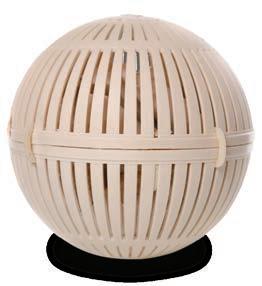
All-natural beneficial bacteria Reduce sludge buildup and odor Natural alternative to chemicals Patented 30-day timerelease technology Improve water quality and clarity
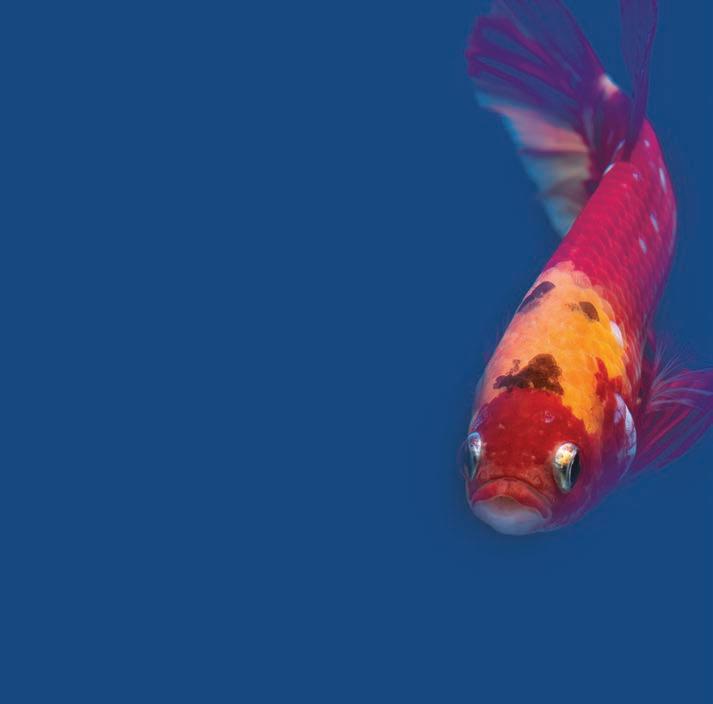
AquaSphere®PRO
Veterinarian approved and safe for fish, livestock, pets, plants and humans.
Enter code: FIRSTTIME20 at checkout Your first order
Calling in? Mention this ad for your discount!
HealthyPonds.com | 1.877.948.0303
The protocol for establishing most wetland meadows calls for the removal of existing vegetation by smothering, tilling or herbicide, then establishing a blend of seeds. The Henrys had misgivings about scraping the existing ecosystem, so a unique strategy was devised — one that had distinct challenges, but a main advantage of preserving the diversity of existing vegetation on-site.
The first step was to use landscape plugs to introduce vegetation that was missing from their meadow environment. In this case, the conspicuous absence was two foundational groups of plants: perennial forbs and warm season grasses. The meadow had none of the beautiful flowering plants that are the stars of wet meadows — no iron weed (Vernonia noveboracensis), Joe-Pye weed (Eutrochium fistulosum) or cardinal flower (Lobelia cardinalis). Absent, too, were the tall, late-summer grasses like Little bluestem (Schizachyrium scoparium) and Switchgrass (Panicum virgatum) that take up valuable real estate to keep annual weeds at bay.
This situation was likely a result of browse pressure from whitetail deer. A secondary impact from the deer seemed to be a proliferation of annual weed species, including Japanese stilt grass (Microstegium vimineum) and joint head basketgrass (Arthraxon hispidus) that had pioneered disturbed areas as tall perennial forbs had been browsed to near extinction. In turn, the fast-spreading annual joint grasses had discouraged warm season grasses from regaining a foothold.
The intention was to establish thick warm and cool season cover to help compete with the annual weed pressure and begin to form the basis of an attractive, diverse wet meadow. The suggested plant list included wet-loving, strongly rhizomatous flowering perennials like wrinkle leaf golden rod (Solidago rugosa), purple stem aster (Symphyotrichium puniceum) and mountain mint (Pycnanthemum tenuifolium) to hold ground and provide important nectar sources for native pollinators. On the drier parts of the meadow, warm season grasses like switchgrass and
little bluestem were introduced. Also included were cool season sedges and grasses like tufted hairgrass (Deschampsia cespitosa), soft rush (Juncus effusus) and water sedge (Carex aquatilis).
Filling the Gaps
Initially, the Henrys had looked to gallon-sized plant material and the immediate gratification of mature plants, but price and availability were a barrier. After much convincing, and given the presence of hydrology and the diversity of species they wished to include, landscape plugs were a sure bet. Plugs are not only more cost effective, but they also minimize disturbance when planting and root faster to become more vigorous plants.
Planting plugs alone was not enough; a management regime was essential. Initially, a prescribed burn was used to knock down existing thatch, which allowed for good establishment of the installed plugs. However, it consequently caused a flush of joint head basketgrass. This was followed by a seasonal high-mowing regiment the following spring, which allowed warm season plants an opening to get a head start on competing with annual weeds. In the fall, a wet meadow seed mix was broadcast throughout the meadow area to allow for a natural cold stratification of the seed and germination the following spring. Given the amount of bare soil left behind by the smothering annual joint

Iris versicolor is always a good choice for its late- May blooms.
Hands Down Healthiest Koi
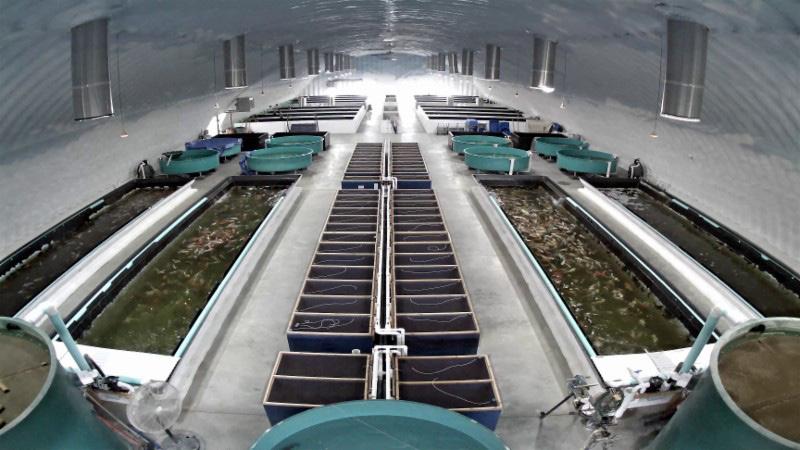
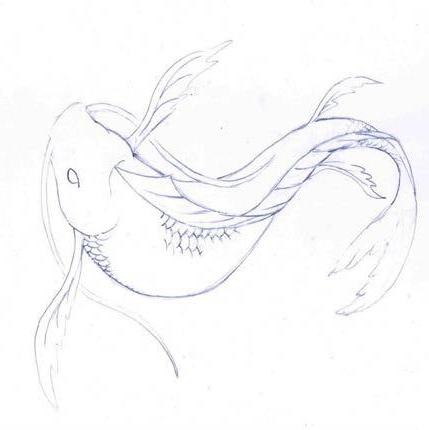

Our Koi Care Facility Works!
Here’s The Proof:
*ZERO health issues since 2018
*Year round availability of retail ready fish * Beautiful fish that sell fast
Your best source for wholesale koi and goldfish ! www.kloubeckoi.com
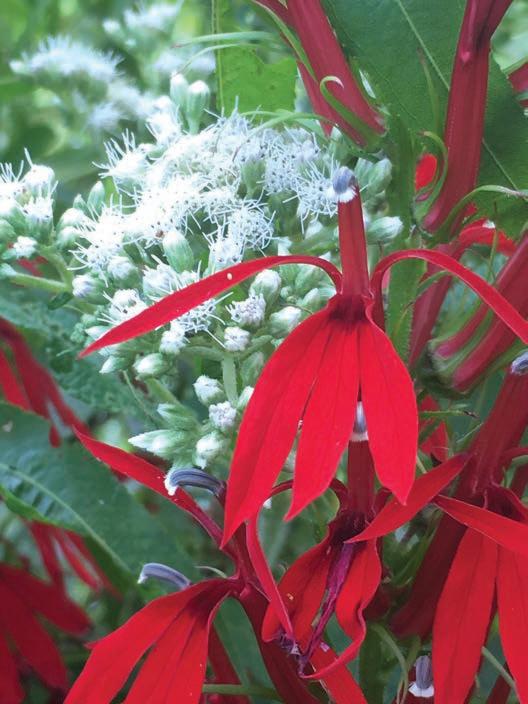


Cardinal flowers (top) provide important nectars for hummingbirds and other pollinators. Swamp milkweed (bottom) is always a happy stop for passing pollinators and other beneficial insects. grasses, the Henrys also used some temporary cover crops to fill gaps.
After all this work — two seasons of planting plugs and seeding — and well into the third year of active management, the Henrys were not seeing very promising results. Many of the plugs seemed to have disappeared or were matted over by annual weeds, despite cool season cover crops. They were just about ready to throw in the towel when they decided to isolate an extensively plugged area of the meadow from the threat of deer browse by installing a three-wire offset electrified deer fence.
Beware of Deer
The result was extremely encouraging. Many plugs that had seemed all but swallowed by the weeds and deer suddenly reappeared. All the perennial forbs, thought dead, emerged robust. The cool and warm season grasses like Deschampsia and Panicum grew so vigorously that the competing annual weeds were significantly reduced.
In the end, it was not one management strategy, but an integrated approach — a lot of patience by the Henrys along with curbing the constant deer pressure on the native flora — that led to this ecosystem’s success. This year, the Henrys intend to fence in the entire wet meadow and look forward to seeing the fruits of their labor and investment. Hopefully, the old adage about establishing meadows — first year it sleeps, second year it creeps, and third year it leaps — will prove true, even if it’s off by an extra year.
For this wet meadow habitat enhancement project, the presence of seasonal hydrology and legacy seed bank proved to be extremely helpful and fruitful. The site is not unlike many others throughout southeast Pennsylvania and the Piedmont. A great many of these wet meadows sit fallow or unattended. With the right management and time (plus learning some stern lessons from both botany and the environment along the way), these wet meadow habitats will increase in ecological value and functionality.
That’s the power of native plants — when they are planted as interconnected tapestry, they can transform a landscape into a restored ecosystem. a
About the Author
John Mark Courtney is an avid plantsman, professional grower and lover of all things wild. He is the founder and owner of Kind Earth Growers LLC, a native plant nursery specializing in aquatic, wetland and upland perennials in Upper Bucks County, Pennsylvania. After completing his bachelor’s degree in environmental design at Delaware Valley University in 1998, he began to pursue his passion for native plants and environmental stewardship. His career has included positions at Bowmans Hill Wildflower Preserve and Aquascapes Unlimited Inc., where he was the head grower and operations manager for 20 years. He was part of the 2014 Greenhouse Product News Class of 40 Under 40 and winner of the 2016 Pennsylvania Landscape & Nursery Association Green Achiever award.
www.kindearthgrowers.com
Closely monitoring your koi is the best practice to keep your koi healthy. Refer to the checklist in this article for tips.

Diagnosis: Koi
10 questions to ask before you call for help
by Taro Kodama,
Kodama Koi Farm
If your koi should die or even look sick, you would be in a panic. If you did not know why the koi was dead or sick, you might wonder if your other koi were in danger as well.
Being in the koi business for almost 50 years in Japan as well as in the United States, my koi farm gets many phone calls or emails asking for help. I would like to share 10 common questions we ask to try to understand your situation so we can make suggestions accordingly. Please use them as a checklist so you can understand the situation yourself. If you have this information available before you call for help, it will help those who help you greatly.
Please note that we are not veterinarians. Our answers to these questions may not stand by proper medical knowledge. We are simply sharing the information that we found useful in the course of running a koi farm and working with our koi customers.
The answers to these questions help us visualize your pond and koi situation and possibly identify causes of the sickness. There are five causes of koi sickness: bacteria, parasites, fungus, virus and accidents. (Viruses are rare and require the professional help of a veterinarian.)
1. What are the water parameters?
Check your water temperature and pH, ammonia and nitrite levels. It is said that 80%
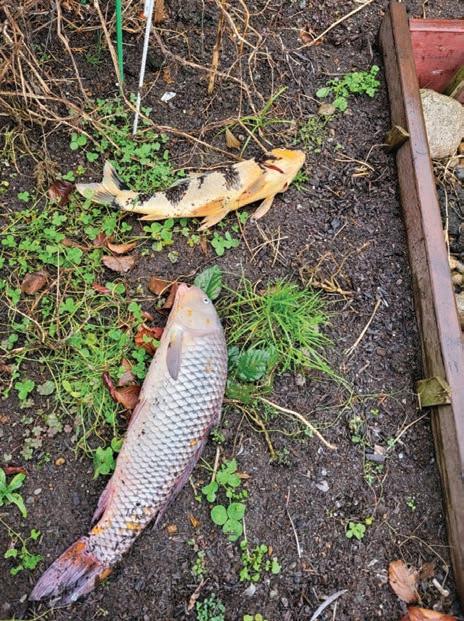

To avoid the loss of your lovely koi, check them every day. Look for open wounds at the bottom. If koi are really large, you will need to pull them out of the water for a thorough examination. of koi health issues come from water. If you consider the fact that koi live in water, it makes sense. Understanding the basic water parameters is critical. This information helps us understand where the problem might have started. Poor water quality always triggers problems, both parasitic and bacterial.
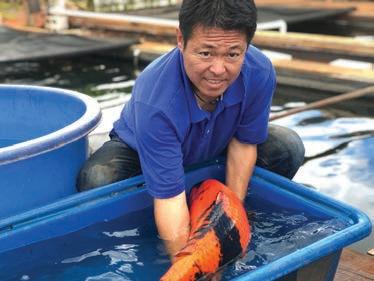
2. How big is your pond?
Understanding the pond environment may give us a clue of what might have happened.
Knowing the total size in gallons of water is also critical when deciding what dose of medication is needed. If you do not know your total gallons of water, I strongly recommend measuring now. There are many ways to do it; a few of them can be found in blogs on my website (and on pg. 16 of this issue).
3. How many koi do you have?
Population density affects the health of koi. If you have too many koi in a pond with poor filtration, it will pollute the water and make your koi sick. Knowing your pond, koi population and filter system is very important.
When you need tanks call the experts at Polytank
- Numerous shapes and sizes - In stock and custom molded - Economical and self supporting



62824 250th St, Litchfield, MN 55355 (320)693-8370 (800) 328-7659 www.polytankco.com
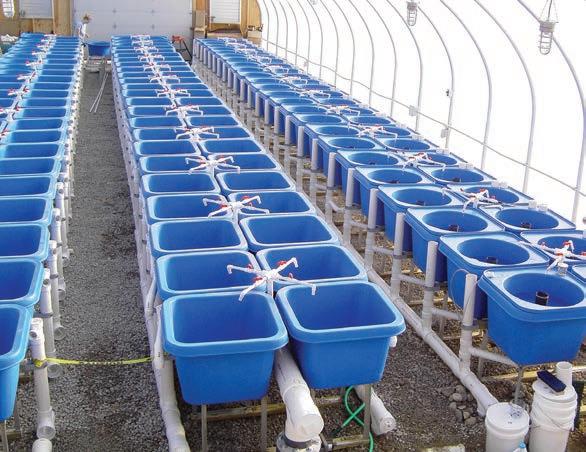
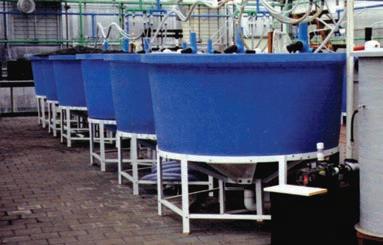
Is the koi flashing, or scratching itself against the pond walls or rocks? Is it sitting at the bottom? Is it floating with its tail up? Is it floating, gasping for air by the waterfall? Is it only one koi or a group of koi? If the koi are dead already, how was it swimming just before it died? A koi’s behavior can tell us many things. If they are flashing or sitting at the bottom, chances are they have parasites. If they are gasping and floating, they may have gill damage caused by parasites or bacteria. It can also be just a lack of dissolved oxygen.
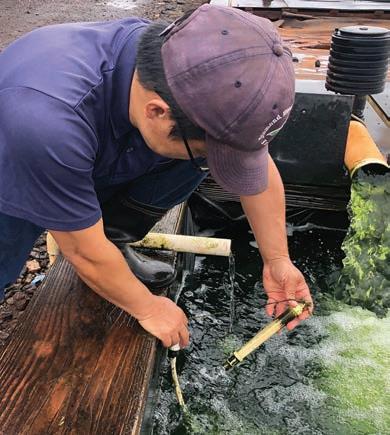
5. Are there external ulcers?
Does your koi have any external injury markings? If you see open wounds, it is definitely a bacterial issue. You need an antibacterial treatment. This could also be a secondary infection coming from parasites, so we would need to examine that possibility, too. We often overlook issues found on the bottom of koi, so please do not forget to check them.
If you do not see any issues on the body, but the koi still does not look right, the cause could lie inside the gills, like parasites or an infection. I recommend you make the koi sleep and then open and check the gill. Even if the koi is dead, you should check to see if there is any damage before you bury the body. If the koi is dead, open the gill cover and check to see if there is any damage.
Checking the water is your first step.
6. When did it start?
Did the signs of sickness recently start, or have they been going on for quite a while? If symptoms just started, you may only have to treat one koi in a quarantine tank. If you have been dealing with the problem for a while, you may have to treat the whole pond.
7. How many koi are infected?
Do you see the signs of sickness on only one koi, or more? This tells us how serious the problem is and how quickly we need to work on the problem.
8. Does the koi have an appetite?
If the koi still eats, that is a good sign. It still has the energy to eat. It is also great information, because in this case, feeding



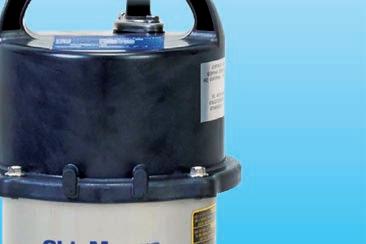


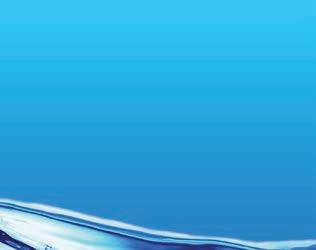


Widest Operating Range Highest Overall Efficiency Lowest Lifetime Cost
ShinMaywa pumps deliver best in class performance for your water garden project. Visit www.Shinmaywasales.com and see how.
Distributed Exclusively By FieldingPump
www.ShinMaywaSales.com
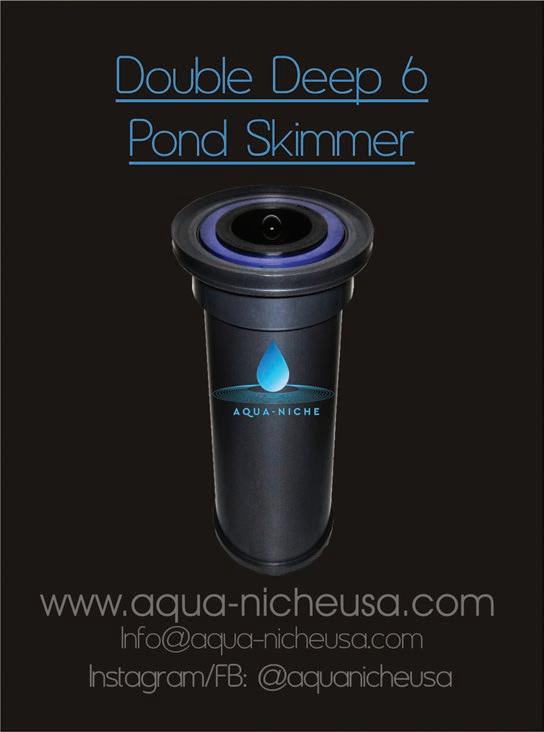
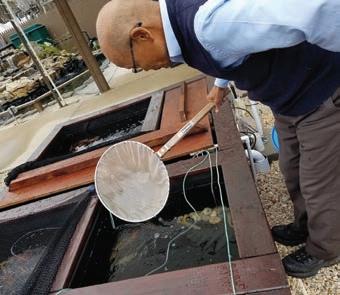
Great Opportunity! Business for Sale Patio Ponds Ltd
Building America’s Best Pond Filters since 1987 ● 70,000+ satisfied customers ● View all 14 models at: www.patioponds.com/pdfs/catalog.pdf ● Made with pride in the USA ● Complete listing at www.patioponds.com ● Business can be operated from anywhere ● No physical contact needed ● Interested persons email patiopondsltd@aol.com
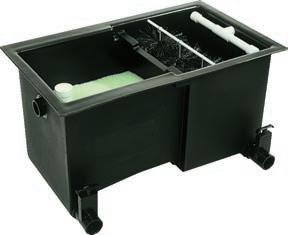
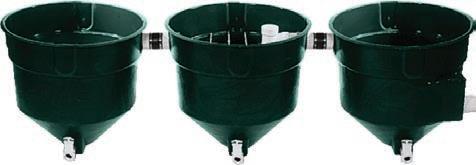
medicated food becomes an option.
9. What do you feed? How often?
What you are is what you eat. If the koi’s diet is not proper, it is hard to maintain good health, just like for us humans. A poor diet will not kill a koi right away, but it will affect the koi’s health over time. Malnutrition or lack of a proper diet can be the cause of sickness or death.

10. Did you do anything new lately?
This includes adding plants, introducing new koi and performing water changes. New additions could come with parasites or other issues. Understanding a possible trigger of the problem can help us deter- An unhealthy diet (top) can cause mine what happened and sickness or death. Remember to what we might do to fix it. inspect your koi thoroughly (bottom)
I hope these basic quesbefore asking for help. tions help you whenever you see issues with your koi. Please examine your pond and koi using this list. If you are going to ask for help, this information would be very useful and appreciated. If you can take pictures of the ulcers or whatever you think is wrong, that would also be a big help for both veterinarians and dealers like myself.
Let’s keep your koi healthy, and be happy with koi. For more information about preventative measures and symptoms of common koi diseases, check out my website at www.kodamakoifarm.com. a
About the Author
Taro Kodama is the president of Kodama Koi Farm, the largest importer and distributor of quality Japanese koi in the United States. With locations in Japan, Hawaii, New York and New Jersey, Kodama Koi Farm carries more than 35,000 Japanese koi from the top breeders in Japan. Taro, along with his father, Mamoru, not only provide show-winning koi, but they also conduct many koi seminars.
A PUMP THAT PUTS A PUMP THAT PUTS YOUR POND AT A YOUR POND AT A HIGHER LEVEL HIGHER LEVEL

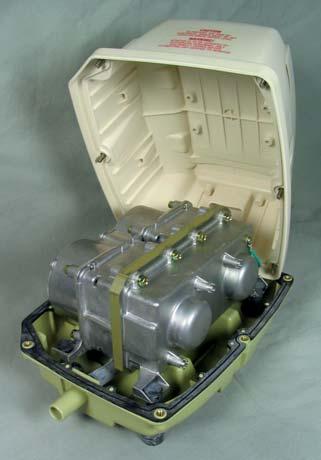

While there are multiple elements that make up a pond, one of While there are multiple elements that make up a pond, one of the most foundational is the pump. After all, itʼs essential for the the most foundational is the pump. After all, itʼs essential for the health of your fish and overall pond performance. Nitto Kohki LA health of your fish and overall pond performance. Nitto Kohki LA Series blowers provide unparalleled performance for koi pond Series blowers provide unparalleled performance for koi pond and water garden applications. This is why theyʼre the and water garden applications. This is why theyʼre the professional choice:professional choice:
They last longer, especially in hot, humid climates. They last longer, especially in hot, humid climates.
Nitto Kohki aerators have one moving part per piston. Properly Nitto Kohki aerators have one moving part per piston. Properly installed and maintained, they have an expected service life installed and maintained, they have an expected service life of 6+ years.of 6+ years.
They run quieter, supporting the natural design of ponds. They run quieter, supporting the natural design of ponds.
Listened to a diaphragm pump lately? In contrast, linear-piston Listened to a diaphragm pump lately? In contrast, linear-piston LA aerators have about as much ambient noise as a light ballast. LA aerators have about as much ambient noise as a light ballast.
Their cost-of-ownership is lower. Their cost-of-ownership is lower.
LA Series blowers consume far less energy— have only 50-60% LA Series blowers consume far less energy— have only 50-60% of the line current requirements of diaphragm pumps. of the line current requirements of diaphragm pumps. Nitto Kohki aerators better leverage filtration capability, increase the Nitto Kohki aerators better leverage filtration capability, increase the fish handling capability of existing ponds, and minimize the risk to fish handling capability of existing ponds, and minimize the risk to valuable koi collections. Theyʼre the ideal selection when building valuable koi collections. Theyʼre the ideal selection when building a new pond – as well as when youʼre looking to add quality and a new pond – as well as when youʼre looking to add quality and reliability to your existing pond. reliability to your existing pond. Call 800 843 6336, e-mail info@NittoKohki.com, or visit Call 800 843 6336, e-mail info@NittoKohki.com, or visit NittoKohki.com for more on LA Series blowers.NittoKohki.com for more on LA Series blowers.



